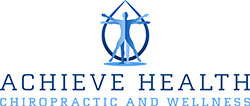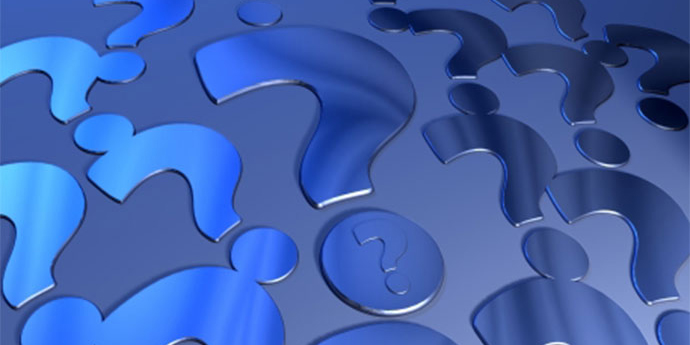Chiropractic Treatment of Headaches
Headaches can range from annoying to debilitating and their cause can be benign or life threatening. The majority of headaches is benign and is caused by dehydration, muscle spasms, stress or vertebral misalignments.
It is important to know what type of headache you are suffering from prior to prescribing a type of treatment. If you are suffering from a dehydration headache, all the aspirin in the world won’t decrease your pain. Headaches can also be caused by serious conditions such as tumors; therefore you need to speak with a healthcare practitioner if your headaches last longer than a week.
The following is a brief description of the most common types of headache classifications:
Tension Headaches
Description: Tension type headaches are the most common, affecting upwards of 75% of all headache sufferers as many as 90% of adults have had tension–type headaches.
Tension–type headaches usually involve a steady ache, rather than a throbbing one, are described as a feeling of pressure or tightening, may last minutes to days, affect both sides of the head, and do not worsen with routine physical activity. It may also be accompanied by photophobia or phonophobia (hypersensitivity to light and noise, respectively.). Nausea is usually absent. Some people get tension–type (and migraine) headaches in response to stressful events. Tension–type headaches may also be chronic, occurring frequently or daily. Psychological factors have been overemphasized as causes of headaches.
Rebound Headache: Rebound headache may occur among people with tension–type headaches, as well as in those with migraines. It appears to be the result of taking prescription or nonprescription pain relievers daily or almost every day, contrary to directions on the package label. If prescription or nonprescription pain relievers are overused, headache may “rebound” as the last dose wears off, leading one to take more and more pills.
Treatment: Chiropractic treatment has been shown to provide relief to patients who suffer from tension and rebound headaches. A randomized controlled trial compared six weeks of spinal manipulative treatment of tension-type headache by chiropractors to six weeks of medical treatment with amitriptyline, a medication often prescribed for the treatment of severe tension headache pain. Researchers found that chiropractic patients experienced fewer side effects (82.1%) and while both were effective during the treatment phase of the study, only the chiropractic patients continued to report fewer headaches when treatment ended.
Stress relief is an important component in the treatment of tension headaches. Simple meditation techniques have been shown to decrease stress can help to prevent tension headaches.
Cervicogenic Headaches
Description: Cervicogenic headache originates from disorders of the neck and is recognized as a referred pain in the head. Primary sensory afferents from the cervical nerve roots C1–C3 converge with afferents from the occiput and trigeminal afferents on the same second order neuron in the upper cervical spine. Consequently, the anatomical structures innervated by the cervical roots C1–C3 are potential sources of cervicogenic headache.
Cervical headache is often precipitated by neck movement and/or sustained awkward head positioning (such as painting the ceiling, or washing the floor) and can reproduced with pressure over the upper cervical or occipital region on the symptomatic side. It is often accompanied by decreased range of motion in the neck, neck, shoulder, or arm pain of a rather vague nature or, occasionally, arm pain of a shooting nature.
Treatment: Because these types of headaches are precipitated by problems in the joints of the neck it is important to see a chiropractor for treatment of the headaches. These headaches are common following an injury like motor vehicle accident or a blow to the head but can also be caused by poor posture and repetitive stress. Chiropractors specialize in the diagnosis and treatment of joint problems of the spine. The chiropractor will also give you exercises and stretches to help prevent this condition from returning.
Migraine Headaches
Description: Migraine headaches are less common in tension–type headaches. Nevertheless, migraines afflict 25 to 30 million people in the United States as many as 6% of all men, and up to 18% of all women experience a migraine headache at some time.
Among the most distinguishing features is the potential disability accompanying the headache pain of a migraine: migraines may last 4-72 hours, are typically unilateral (60% of reported cases), throbbing, of moderate to severe intensity, and are aggravated by routine physical activity.
Nausea, with or without vomiting, and/or sensitivity to light and sound often accompany migraines. An “aura” may occur before head pain begins–– involving a disturbance in vision, and/or an experience of brightly colored or blinking lights in a pattern that moves across the field of vision. About one in five migraine sufferers experiences an aura. Usually, migraine attacks are occasional, or sometimes as often as once or twice a week, but rarely occur daily.
Treatment: In the treatment of migraine headaches is important to determine the triggers that cause these headaches. For some people food is a trigger. The most common known food triggers are the four C’s; cheese, chocolate, caffeine and citric acid. Citric acid is a preservative that is found in a number of different foods and has been shown to be a trigger for migraine headaches. It is important to remember that everyone’s triggers may differ and it is important to determine what your own individual triggers. Using a food journal can be an effective way of tracking headache symptoms and relating them to food triggers. Stress has also been shown to be a trigger for these headaches. Meditation has been shown to be beneficial in decreasing the stress that can trigger these headaches.
Cluster Headaches:
Description: Cluster headaches are relatively rare, affecting about 1% of the population. They are distinct from migraine and tension–type headaches. Most cluster headache sufferers are male –– about 85%.
Cluster headaches come in groups or clusters lasting weeks or month. The pain is extremely severe but the attack is brief, lasting no more than an hour or two. The pain centers around one eye and this eye may be inflamed and watery. There may also be nasal congestion on the affected side of the face.
These “alarm clock” headaches may strike in the middle of the night, and often occur at about the same time each day during the course of a cluster. A history of heavy smoking and drinking is common, and alcohol often triggers attacks.
Food Allergy Headaches:
Description: Food Allergy headaches are being diagnosed at an increasing rate. There are two reasons why we have seen this increase in diagnosis. First, there is a better understanding of how foods affect our bodies. For years we have know that the body can react unfavorably to foods such as peanuts and shellfish. Often these reactions can be harmful if not fatal. Due to the severe nature of these allergies, they have been studied extensively. Food allergy headaches have not been studied as thoroughly but recent research is showing a connection between food allergies and headaches.
Food allergens (the food fragments responsible for an allergic reaction) are proteins within the food that usually are not broken down by the heat of cooking or by stomach acids or enzymes that digest food. As a result, they survive to cross the gastrointestinal lining, enter the bloodstream, and go to target organs, causing allergic reactions throughout the body.
Treatment: The treatment of a food allergy headache involves removing the particular offending food. This can be very difficult in a society where we tend to eat meals that contain many different kinds and types of food. The gold standard for treatment of food allergies is the food elimination diet. This diet involves removing all foods from your diet except for a small number of foods that have been shown to be hypoallergenic. Once your body has eliminated the allergens which typically take two-weeks, certain individual foods are reintroduced and symptoms are noted. Food allergies can also be tracked using a food diary. Unfortunately some foods may cause an immediate reaction while others may take hours or days to produce a reaction. This complicates the tracking of symptoms associated with different foods. There are also different blood tests available that measure how your body reacts to certain foods. These tests are provided by naturopaths and some chiropractors.
Chiropractic Headache Research
There have been numerous studies done on the treatment of headaches with chiropractic. The following two studies are the most widely referenced and well respected.
Duke Study
A literature review performed by researchers at Duke University looked at a number of studies that looked at chiropractic treatment for headaches. Researchers concluded the following: “Manipulation appeared to result in immediate improvement in headache severity when used to treat episodes of cervicogenic control. Furthermore, when compared to soft-tissue therapies (massage), a course of manipulation treatments resulted in sustained improvement in headache frequency and severity.”
Migraine Study
This study compared chiropractic spinal manipulation to amitriptyline which is a medication often prescribed for the treatment of headache. The researchers found that “spinal manipulation seemed to be as effective as a well-established and efficacious treatment (amitriptyline), and on the basis of a benign side effects profile, it should be considered a treatment option for patients with frequent migraine headaches.”
In other words, the safety and effectiveness of chiropractic treatment or spinal manipulation in the treatment of headache should be considered by patients suffering these symptoms.
The researchers also found that in the weeks immediately following treatment, patients who had recieved spinal manipulation had a 42% reduction in headache frequency, compared to only 24% of those who took amtriptyline. The chiropractic group had fewer headaches even after treatment had ceased.
For more information visit your Minnesota Chiropractic.


